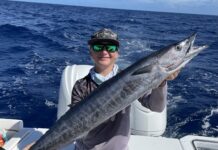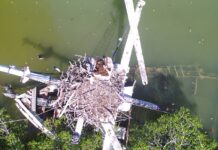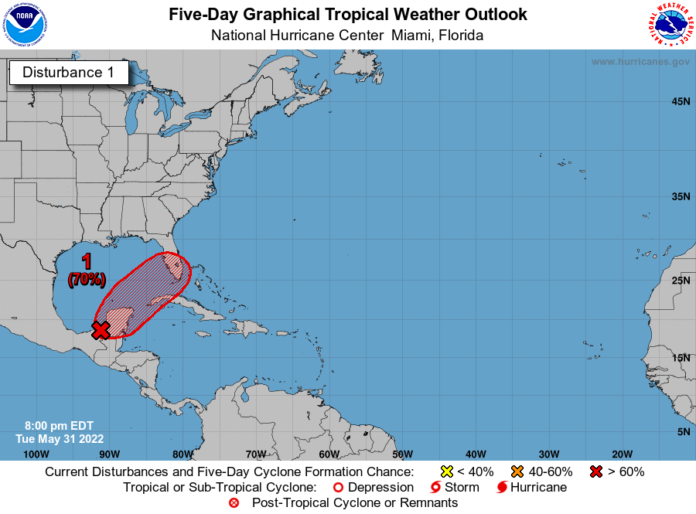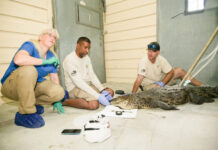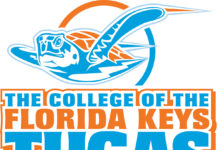June 1 starts a six-month hurricane season that forecasters say could bring 14 to 21 named storms due to La Niña and warmer Atlantic temperatures.
Remnants from Hurricane Agatha, which made landfall in Mexico as a Category 2 on May 27, could bring a weak tropical storm and several inches of rain to the Florida Keys later this week and into the weekend.
Jon Rizzo, warning coordination meteorologist with the National Weather Service in Key West, said there’s increasing confidence that a tropical depression could form by Thursday, June 2 or Friday, June 3 over the northwest Caribbean Sea. The latest track by the National Hurricane Center shows South Florida and the Florida Keys as the main target.
Rizzo said the storm is expected to move northeast rather slowly, causing heavy rain for the Keys.
“Conditions are not ideal for strong development,” Rizzo said, adding that it could be a tropical depression or a weak tropical storm.
If elevated to a tropical storm, it would be the first named storm of the 2022 Atlantic season. Storms with sustained winds below 39 mph are referred to as tropical depressions, while storms with sustained winds of at least 39 mph would be on the lower end of a tropical storm.
Hurricane Agatha made landfall just west of Puerto Angel, Mexico on May 27. The Category 2 storm was the first of the eastern Pacific season. Rizzo said it’s not unprecedented to see a Pacific storm causing some disruption to the southeast U.S. this time of year, when currents aren’t necessarily moving west into the open Pacific Ocean.
“This is not something we would normally see during the peak of hurricane season where we keep our eyes more to the east and southeast,” Rizzo said.
Monroe County Emergency Management urged residents to review their storm preparedness plans, especially those in areas prone to flooding from rainfall.
In the Keys, a hurricane conference for the tourism industry on May 26 welcomed Jamie Rhome, deputy director for the National Hurricane Center, as one of several guest speakers. He joined the NHC in 1999 as a marine forecaster. He was then elevated to hurricane specialist in 2006.
Rhome noted that between 2017 to 2021, there were about 100 named storms and 45 named hurricanes. Sixteen of those made landfall in the U.S.
Rhome said the average number of cyclones per year is going up, but what’s worse is the impact storms are having upon landfall. Rhome attributed that to warming Atlantic waters, sea level rise and more moisture in the air.
“I’m an avid free diver and I lobster, and I’m telling you even as a nonscientist, the ocean is warming. That is the fuel for a hurricane,” he said.
And Rhome said storms are forming close to land and rapidly intensifying.
“Most powerful hurricanes that strike the U.S. develop rapidly basically right off the coast,” he said. “The notion that you have days and days, you have to drop that. It’ll catch you off guard at some point.”
A recent survey by AAA heard from roughly 5,000 residents regarding the upcoming hurricane season. A quarter of Floridians say they wouldn’t heed evacuation warnings. Among the reasons were the lack of a safe option for their pets, uncertainty of where to evacuate to and financial reasons.
Two-in-five respondents said high prices and availability of gas would make them less willing to evacuate their homes if recommended to do so.
“Prices at the pump are likely to remain high throughout the summer,” said Mark Jenkins, spokesman for AAA. “So, if you’re worried about evacuation costs, it may be a good idea to start setting aside some money now.”
The survey by AAA found that 27% of Floridians are more concerned about this year’s hurricane season.
As hurricane season begins, Rizzo said, people should know the risks and vulnerabilities associated with their properties. He also recommends visiting monroecountyem.com or floridadisaster.org to learn more on how to prepare.
“Get a plan. That’s the mission,” he said.
Florida’s disaster preparedness tax free holiday goes through Friday, June 10. Floridians are able to save on items such as flashlights, radios, tarps, batteries, coolers and generators. Other tax free items include cat litter less than 25 pounds or $25; leashes, collars or muzzles less than $15; dry pet food less than 15 pounds or $15; and carbon monoxide detectors less than $70. Visit floridarevenue.com/disasterprep for a complete list of the eligible items consumers can purchase tax free.






